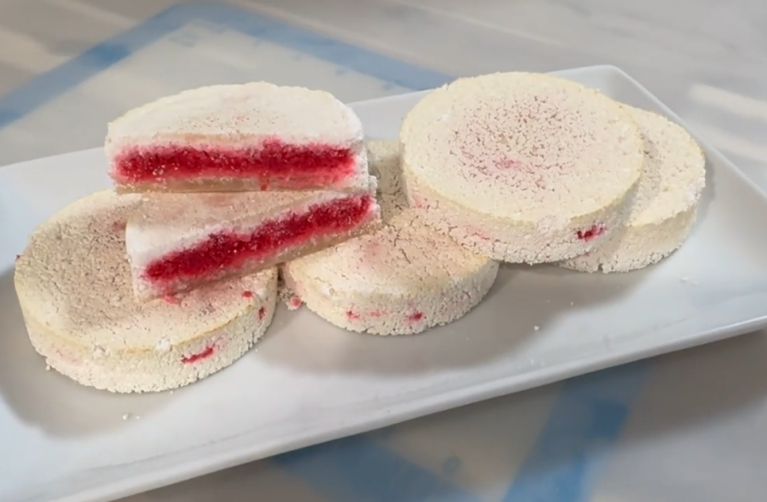Guyana cassava bread is crispy, natural, and packed with tradition. Discover how it’s made, the best ways to enjoy it, and where to find it.
It holds deep cultural and historical significance, passed down through families as part of their traditional way of life.
Unlike soft wheat-based bread, Guyanese cassava bread is thin, crispy, and made using natural methods that have remained unchanged for centuries.
Guyanese cassava bread is different from its Caribbean counterparts, such as Dominican casabe.
The Guyanese version is often thinner and drier, making it more brittle and ideal for dipping into rich stews or eating with simple spreads.
Indigenous groups like the Arawak and Warrau have relied on this bread as a primary food source, using a unique preparation method that involves removing toxins from the cassava root.
Today, it remains a key part of Guyanese cuisine and is enjoyed in both traditional and modern meals.
Table of Contents
- Ingredients Used in Guyana Cassava Bread
- Traditional Method of Making Guyana Cassava Bread
- How to Eat Guyana Cassava Bread
- Health Benefits of Guyana Cassava Bread
- Where to Buy Guyana Cassava Bread
- Conclusion

Ingredients Used in Guyana Cassava Bread
The beauty of Guyanese cassava bread lies in its simplicity. Unlike wheat bread, it requires no flour, yeast, or baking powder.
- Fresh cassava (yuca): The only required ingredient, grated and processed to remove moisture.
- Salt (optional): Some add a pinch of salt for flavor, though traditional recipes do not use it.
- Water (optional): In certain variations, a small amount of water is added to improve texture.
- Coconut: Some variations include grated coconut for a richer taste and slightly softer texture.
- Honey: Occasionally used to add a hint of sweetness, especially in modern adaptations.
- Flavor: Naturally mild and earthy, with a subtle nuttiness from the cassava.
- Color: Ranges from pale white to light golden brown, depending on cooking time and cassava variety.
This minimal ingredient list allows cassava bread to remain all-natural, preservative-free, and easy to store for long periods.
Related Posts
Cassava Flour Bread Recipes You Must Know
How to Make Haitian Cassava Bread
The Different Types of Cassava Flour Bread
How to Make Cassava Flour Cookies
Traditional Method of Making Guyana Cassava Bread
Making Guyanese quinches is a time-honored tradition that requires patience and skill. The process involves several steps to ensure the bread is safe to eat and achieves the perfect crisp texture:
- Prepare Sandwich: Prepare the coconut flour, and honey, color and mix with water, and set aside. Make it as thick as possible. This mixture serves as a sandwich between two layers of cassava pulp disc. However, it is optional.
- Peel and grate the cassava: The tough outer skin is removed, and the inner flesh is finely grated using a hand grater or mechanical grinder.
- Squeeze out the liquid: The grated cassava is placed into a matapee, a long, woven strainer made from fibers. The matapee is stretched to squeeze out the cassava juice, which contains toxic compounds like cyanide. Removing this liquid is a crucial step.
- Sift the cassava meal: The dried cassava is passed through a fine sieve to remove large particles and create a uniform texture.
- Add water and mix with ingredients (honey, flavor, color if needed): Some recipes involve adding a small amount of water to the cassava meal before forming the dough.
- Knead the dough: The cassava is pressed and mixed to ensure an even consistency.
- Mold into thin, round discs: The cassava is shaped into thin, round sheets using a flat surface or pressing tool. You can use a special cup with a lead to press the disc for the desired shape. Add the coconut sandwich between two cassava pulp disks
- Cook on a heated surface: The bread is placed on a tawah (a flat iron or clay griddle) over an open fire. This traditional cooking method gives it an earthy, smoky flavor.
- Flip and finish drying: The bread is flipped to cook evenly, ensuring that all moisture is removed. This helps the bread last longer without refrigeration.

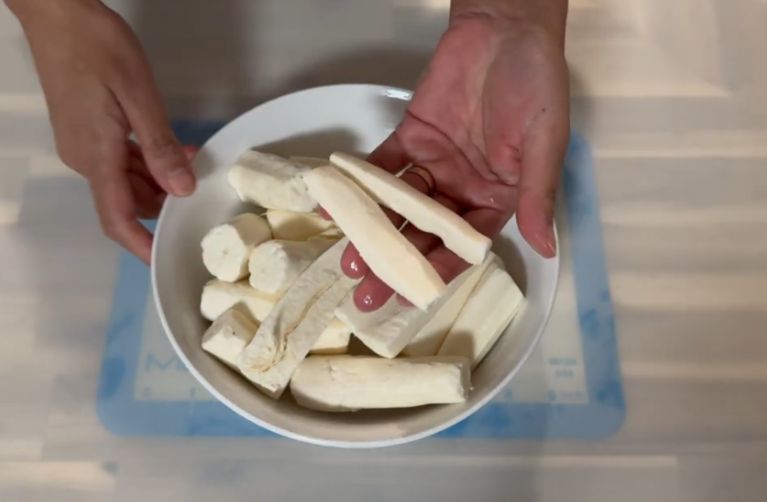
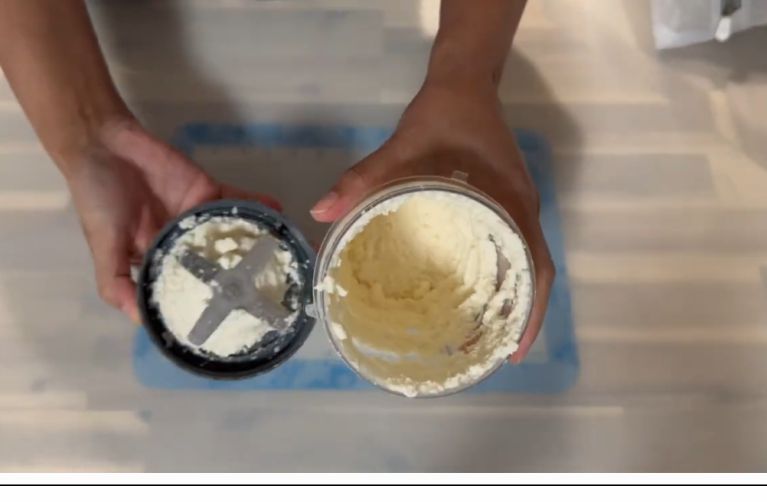
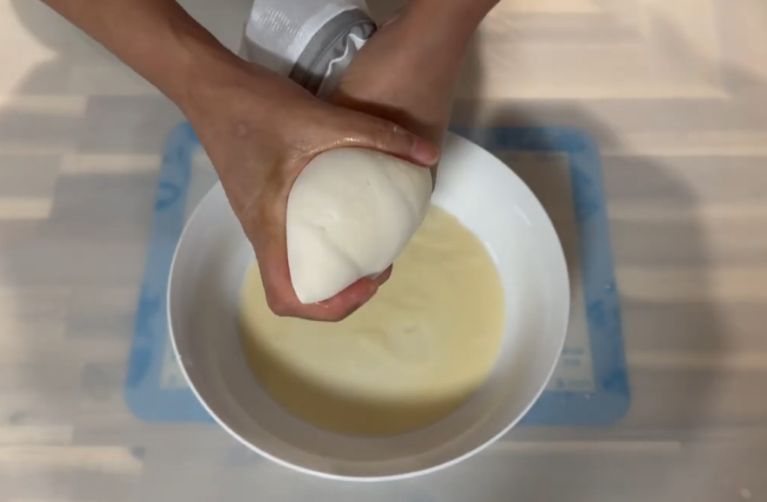
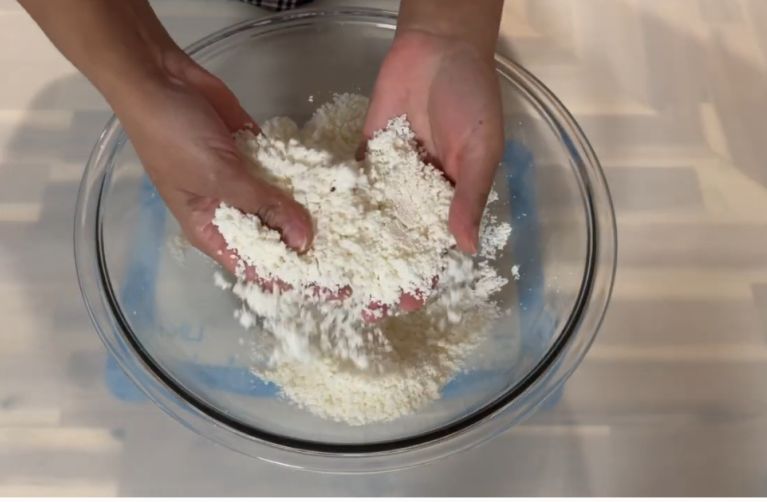
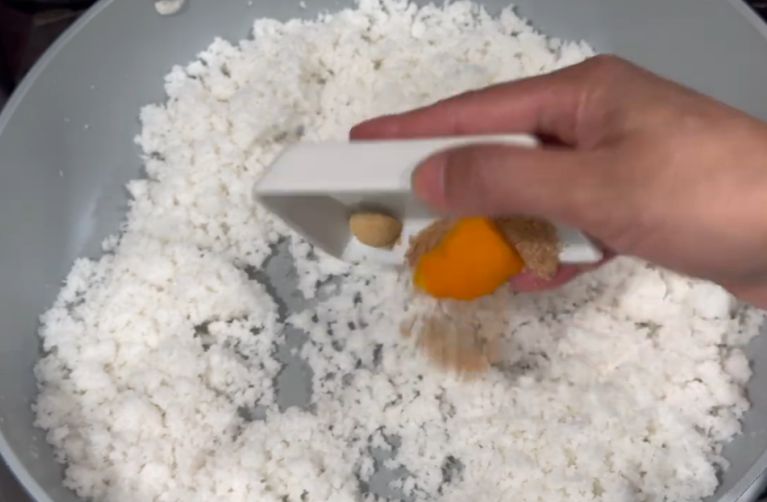

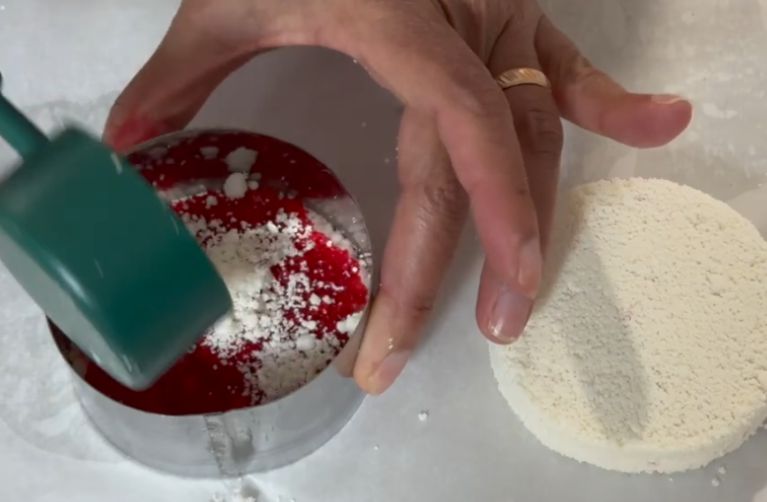
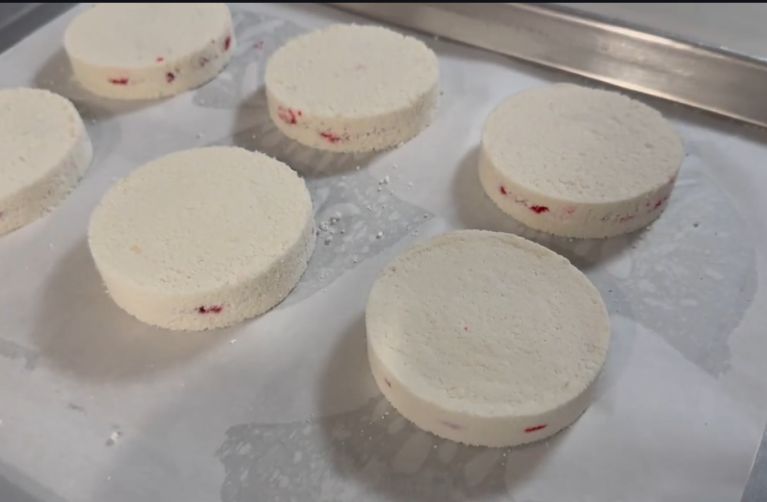
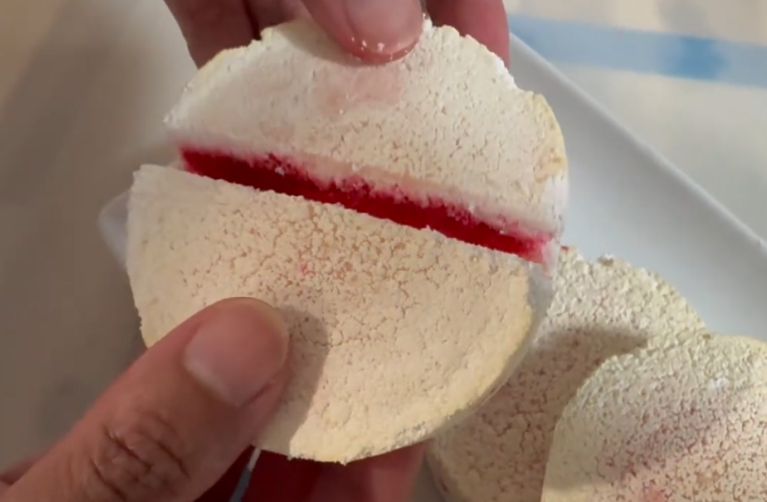
Once cooled, the cassava bread is stored in a dry place, where it can last for weeks or even months.
How to Eat Guyana Cassava Bread
Guyanese quinches is incredibly versatile and pairs well with many Guyanese dishes. Here are some traditional ways to enjoy it:
- Dipped into pepper pot: Pepper pot is Guyana’s national dish, made with slow-cooked meat, cassareep (a cassava-based sauce), and spices. The crispy cassava bread soaks up the flavors beautifully.
- Eaten with metemgee: A hearty Guyanese stew made with ground provisions (root vegetables), coconut milk, and fish or meat.
- Served with butter, honey, or jam: A simple and tasty way to enjoy cassava bread as a snack.
- Crumbled into milk or porridge: Some people break cassava bread into small pieces and mix it with warm milk or porridge for breakfast.
For those who love experimenting, cassava bread can also be toasted over an open flame for extra crunch or used as a gluten-free alternative to crackers.
Health Benefits of Guyana Cassava Bread
Guyanese quinches is not just a traditional food; it also offers several health benefits:
- Gluten-free: A great option for those with celiac disease or gluten intolerance.
- High fiber content: Cassava is rich in fiber, which aids digestion and promotes gut health.
- Long shelf life: Because it contains no moisture, cassava bread can be stored for weeks without refrigeration.
- No preservatives or additives: Made from pure cassava, it’s a clean and natural food choice.
Cassava is also a source of complex carbohydrates, providing sustained energy without causing blood sugar spikes. This makes it an excellent addition to balanced diets.
Where to Buy Guyana Cassava Bread
If you’re in Guyana, you can find Guyanese cassava bread in local markets, Indigenous villages, and small roadside stalls. Many families still make it by hand, keeping the tradition alive.
For those living outside Guyana, cassava bread is available in Caribbean and Guyanese grocery stores in the U.S., Canada, and the UK.
You can also find it online through specialty food retailers that ship authentic Guyanese products.
When buying, look for vacuum-sealed or well-packaged cassava bread to ensure freshness.
Conclusion
Guyanese cassava bread is more than just food, it’s a tradition, a connection to the past, and a staple that continues to nourish families.
Whether enjoyed with a hearty stew, spread with butter, or crumbled into porridge, it remains a beloved part of Guyanese cuisine.
The process of making cassava bread may be labor-intensive, but it preserves a way of life that has been passed down for generations.
If you’ve never tried it, seek out an authentic batch and taste the history in every crisp bite.

Chimeremeze Emeh is a writer and researcher passionate about Africa’s most transformative root crop—cassava. Through his work at cassavavaluechain.com, he explores the entire cassava industry, from cultivation and processing to its diverse applications in food, health, and industrial use.
He also writes for palmoilpalm.com, where he shares his extensive experience and deep-rooted knowledge of palm oil, covering red palm oil, palm kernel oil, and refined products. His work there reflects his lifelong connection to agriculture and his commitment to promoting sustainable value chains in Africa.
Driven by curiosity and purpose, Chimeremeze aims to shed light on how cassava continues to empower communities, strengthen food systems, and link traditional farming wisdom with modern innovation.

